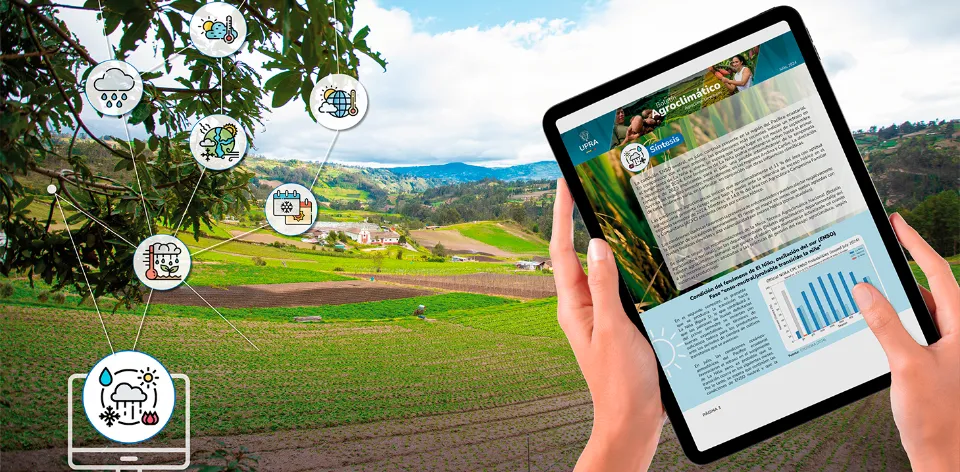 14/8/2024
14/8/2024
La Niña phenomenon may intensify rainfall in the last quarter of this year

The July 2024 Agroclimatic Bulletin, prepared by UPRA as part of the Agricultural Risk Management Information System (SIGRA), indicated that 14.8% of the area with Small-Scale, Family, Ethnic, and Community Agriculture is at risk due to excessive rainfall.
The probability of the La Niña Phenomenon occurring will decrease during the first quarter of 2025.
Check here the Agroclimatic Bulletin.
Bogotá, D. C., (@UPRAColombia, @claudialili76). The Rural Agricultural Planning Unit (UPRA) published the July 2024 Agroclimatic Bulletin, which highlighted that according to IDEAM's climate predictions, the La Niña Phenomenon is expected to occur between September and November.
Claudia Cortés, general director of UPRA, stated that "in this agroclimatic bulletin, the first thing identified is that the La Niña Phenomenon, which was anticipated between July and September, is showing signs of intensifying between September and November. It could even extend into the first quarter of 2025."
Meanwhile, Alfonso Triana, a specialist at UPRA, noted that "the regions that will be affected, with medium to low levels, are the Caribbean and Andean regions. However, some specific areas in other regions may experience some impact, although not to a high degree."
Additionally, according to the Agroclimatic Bulletin's predictions, 11% of the area with agricultural aptitude is at low to medium risk due to excessive water in the second half of 2024.
Furthermore, 14.8% of the area with Small-Scale, Family, Ethnic, and Community Agriculture is at medium to low risk due to excess water.
Triana explained that "there will be medium-risk impacts, mainly in Caribbean departments such as Magdalena, Cesar, and Atlántico, and low-risk impacts in departments such as Cundinamarca, Santander, Cauca, and Valle del Cauca."
How is the Agroclimatic Bulletin Prepared?
The Agroclimatic Bulletin, published monthly by UPRA, is based on climate predictions generated by the Institute of Hydrology, Meteorology, and Environmental Studies (IDEAM). "The predictions are updated monthly to continuously improve accuracy for the coming months, meaning the predictive capacity improves as the forecasting time shortens", Triana stated.
The objective of UPRA's Agroclimatic Bulletin is to inform local authorities, whether municipalities or departments, as well as associations and producers, about the prevailing climate predictions in each territory within the agricultural frontier.
"The bulletin aims to identify areas where the greatest risk may occur so that municipalities and departments can take proactive preparation measures, allowing each sector agent to implement the necessary mitigation measures", added Triana.

